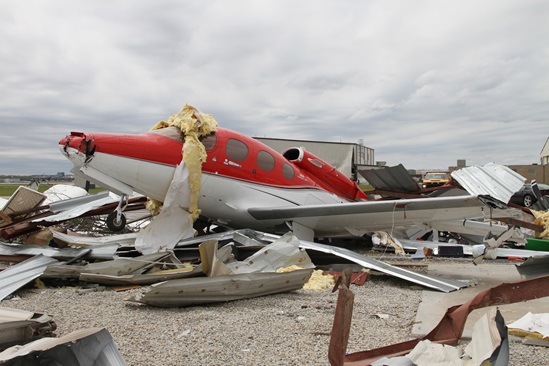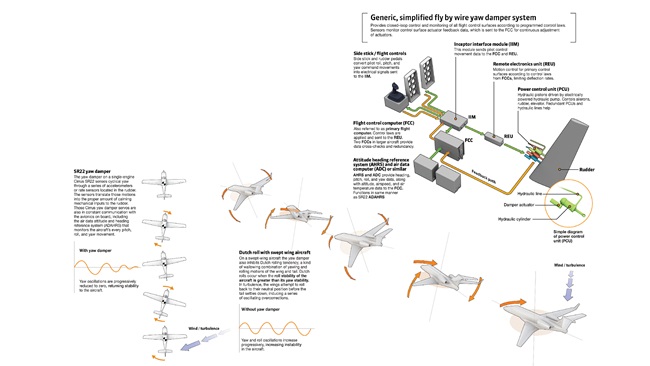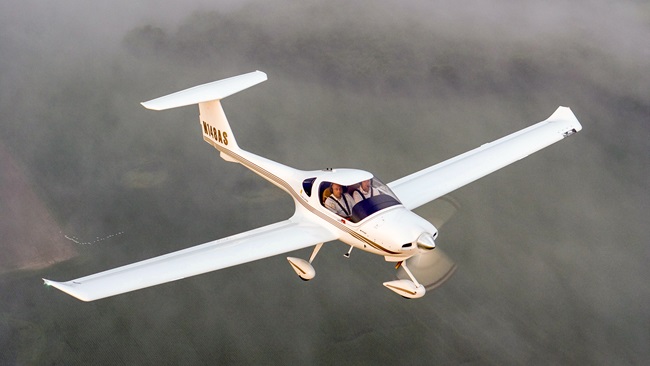Weather: Fair-weather surface winds
Got gusts? Blame mixing

Just imagine the sudden onset of low clouds, thunderstorms, or wintry precipitation. But what if it’s a warm day, the weather is good VFR, the terminal aerodrome forecasts (TAFs) make no mention of any change—and the only clouds in the sky consist of a puffy, scattered to broken layer at 3,000 to 5,000 feet agl, with low tops and blue sky above? It’s ideal weather, right? Then why, you ask yourself, is the windsock periodically at full salute, and erratically switching directions?
It was severe clear earlier in the day, with cool temperatures and not a breath of wind. Just what you’d expect from a high-pressure system parked right overhead. But by 10 a.m. temperatures budged upward and the dew on parked airplanes had burned off. By noon the first cumulus clouds appeared and with them came the first stirrings of wind. By your 2 p.m. flight time there were more cumulus clouds and the winds were picking up, with some gusts reaching 20 knots.
What had started out as a perfect flying day was now shaping up as a battle against gusty, shifting crosswinds. Your practice flights in the traffic pattern will now involve some degree of turbulence, as well as the need to make rapid aileron and rudder inputs to correct any drift before planting the landing gear on the runway. It’s not everybody’s idea of a fun time. Keeping the airplane’s nose straight down the runway in crosswinds is more like work!
So why the switch from morning calm to afternoon mayhem? This little meteorological drama is quite common when high pressure prevails. During the nighttime hours, temperatures fall, the Earth cools, and so a layer of cold, dense air hugs the surface. This air may be so cool that it reaches the dew point—the temperature at which moisture condenses—and dew forms.
This cold, ground-bound air mass is very stable, so there’s little, if any, surface wind. Meanwhile, the winds aloft keep on blowing because they’re not impaired by friction with terrain. There may even be a band of warmer air lying atop that cool surface air, and this further separates the winds aloft from those near the ground. Ordinarily, temperatures decrease with altitude, but when there’s a nocturnal inversion colder air remains within three thousand or so feet of the surface. Above the inversion layer temperatures can be 10 to 15 degrees Fahrenheit warmer. Try ballooning, parachuting, or ultralight flying to get a front-row seat on heating at the inversion layer.
With the heat of the day, the Earth eventually warms, and that cold inversion layer heats up. Dew burns off, and the first weak thermals head skyward by late morning. By midday the inversion layer erodes completely, and any thermals are now free to mix with the air aloft. The normal temperature lapse rate resumes, and clouds begin to form where temperatures and dew points aloft begin to merge.
That’s not all. There’s a lot of mixing as thermals meet the cloud level. The rising thermals feed the clouds with heat, which make them grow and mature. When thermals leave the ground, the adjoining air acts as inflows to fill the “vacuum” they leave behind. When the mature clouds fill with condensed moisture, downdrafts are created as saturated air heads for the surface. And all the while, there’s a churning effect as the inflows from the surface and the downdrafts from the clouds team up to create those dreaded surface winds.
As you strap in for the day’s flying, know that it’s those rising and descending motions that make flying close to the ground a little bit harder, not an oncoming front. And know that those downdrafts from the cloud base give you a nice-to-know rule of thumb: Surface gust strength is a great indicator of wind speeds at, say, the 5,000-foot level. In effect, all that churning is bringing winds aloft to the surface.
Any other rules of thumb? You bet. Avoid these diurnal wind cycles by flying early in the day, when the inversion-busting wind cycle hasn’t reached its peak—or fly late in the day, when surface temperatures subside, and the cycle is broken. Until tomorrow.



